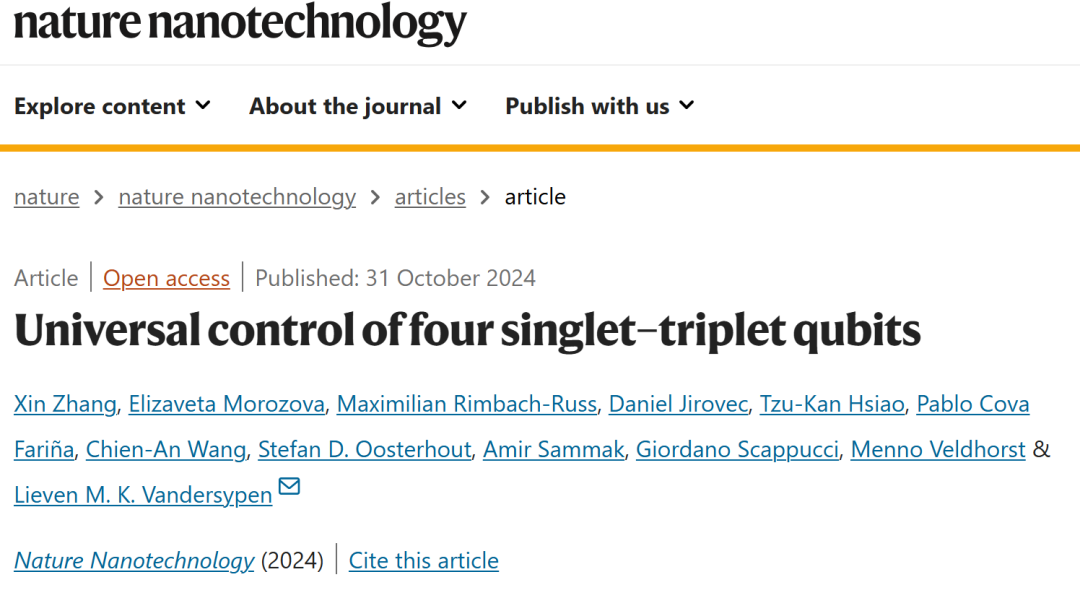

To fully leverage the potential of quantum computing, error correction must be completed before errors occur. With enhanced connectivity between quantum bits, the redundancy and error rate requirements for achieving fault-tolerant quantum computing can be relatively reduced.
Even so, the required redundancy will quickly push the number of quantum bits into the millions. Considering the challenges of building large-scale monolithic quantum registers, solutions based on spatially separated quantum registers interconnected via quantum links are gradually gaining recognition.
Among various quantum computing platforms, gate-based semiconductor spin qubits are attracting attention due to their numerous advantages. Recent advancements in this field include significant improvements in spin coherence, high-fidelity single and two-qubit gate operations, stable operation at high temperatures, and full control over up to six quantum bits.
Moreover, spin qubits are strong candidates for densely integrated quantum processors due to their high compatibility with existing semiconductor processes and approximately 100 nanometer device spacing.
Although traditional two-qubit gates rely on exchange interactions between adjacent quantum dots, various strategies have been proposed to enhance connectivity between distant spin qubits.
One class of solutions involves hybrid device designs, such as using superconducting resonators to achieve coupling of electron or hole spins over long distances, successfully demonstrating iSWAP oscillations between two spin qubits separated by hundreds of micrometers.
Another promising strategy is to connect quantum bits by transporting (transferring) electron spins on-chip, suitable for distances of about 10 micrometers, which not only enhances connectivity within the register but also forms coherent links between different quantum registers.
Similar experiments have been validated in trapped ions and neutral atoms, successfully demonstrating the physical transport of quantum bits.
Currently, there are two main methods for spin transport: “bucket transport” and “conveyor belt mode”. Bucket transport involves gradually adjusting the electrochemical potential of quantum dots to transport electrons along the lattice, with experiments achieving electron transport across nine quantum dots and controlling the single-hop spin flip probability to below 0.01% in GaAs and Si/SiGe systems.
The maintenance of spin coherence has been qualitatively studied in GaAs systems, and quantitative measurements have been conducted in silicon double quantum dots using Hahn-echo sequences, with single-hop phase flip probabilities of 0.7% and 0.1%, respectively. This probability can be further reduced near zero magnetic fields.
Additionally, it has been demonstrated in Ge quantum dots that non-adiabatic bucket transport under the condition of spin-orbit coupling can achieve 99.97% high-fidelity single-qubit gate operations. The conveyor belt mode, on the other hand, involves wrapping electron spins within a moving potential well for transport.
This moving potential well can be constructed using surface acoustic waves or phase-difference sinusoidal signals, achieving electron transport in channels on the order of 10 micrometers. Previous studies have explored coherent transport processes by moving a single electron in a spin singlet, but a systematic comparison of the performance of the two methods is still lacking, especially regarding quantitative studies of long-distance coherent transport under high-speed and high-fidelity conditions.
In this study, Professor Lieven Vandersypen and his team at Delft University of Technology quantitatively assessed the phase flip probability during the repeated back-and-forth movement of a single electron in isotopically purified Si/SiGe linear devices using Ramsey and Hahn-echo methods, systematically comparing the performance of bucket and conveyor belt transport methods.
The authors also proposed a novel conveyor belt implementation based on dual-frequency sinusoidal waves and studied its performance under different driving amplitudes and transport speeds.
In the experiments, the single-frequency conveyor belt achieved a transport speed of 36 m/s, while the dual-frequency conveyor belt remained stable at 64 m/s.
Finally, the authors evaluated the fidelity of transport operations achieving a cumulative transport distance of 10 micrometers in the device through staggered random benchmarking, with results showing a fidelity of 99.54 ± 0.05%.